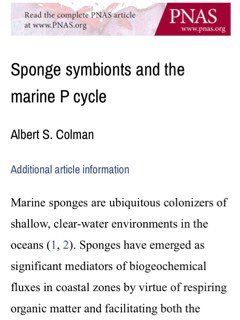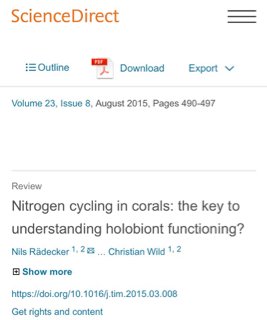karimwassef
Active member
Yes. I've read it! Good paper.
Subsea,
Sent you an email about the book link. That is interesting info on what the skimmers can remove. If they could remove 100 % they would stop foaming every now and then. But a well stocked reef tank can constantly produce skimmer foam. So that 40 to 50 % figure seems reasonable. Almost all the nutrients on an oceanic reef are bound up within the existing biomass. What is available in the water column is very minor compared to existing biomass. That is true of organic and inorganic. That is Darwin's Paradox. All that live living in a nutrient desert basically.
Full paper is here
https://www.ncbi.nlm.nih.gov/pmc/articles/PMC4882574/#!po=14.7619
Sent from my iPhone using Tapatalk
Karim,
Oceanic reef waters are low in inorganic nutrients Nitrogen and Phosphate. The heavily filtered captive sps systems are now adding nitrogen and phosphate to promote growing coral. Those inorganic nutrients are taken up by the zooxanthellae.


Yes! That's why I have no filtration at all anywhere. All open flow, no export, no media.
Subsea,
NPS are the perfect filter feeder animals for the filter feeder zone. And that is where a lot of them are found. The transitional zone between light and dark zones. You need some type of photosynthetic animal to create the sugars DOC that are the primary food source for Darwin's Paradoxal Oceanic Reef system. Unless of course you just want to do a Cryptic or Twilight Zone.
Hey subsea. I'm planning a 1500gal solar tank in Dallas. You have a 10,000 gal with greenhouse macro in Austin? What is that like? Want to drive up a few hours and help me out mine together?

